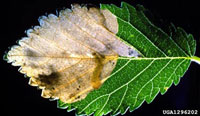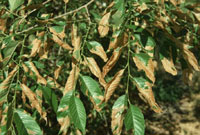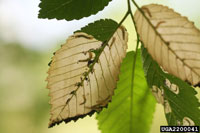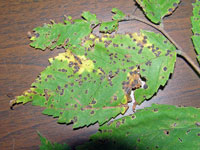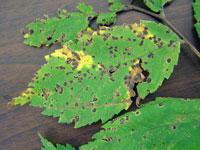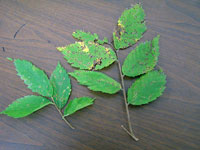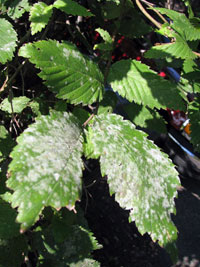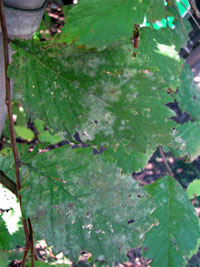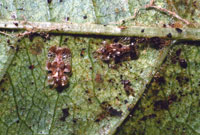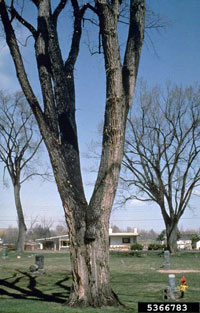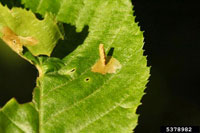Extension > Garden > Diagnose a problem > What's wrong with my plant? > Deciduous Trees > Elm > Dots, spots or blotches on leaves
Elm > Leaves > Dots, spots or blotches on leaves
1 of 6
Elm leafminer
Kaliofenusa ulmi
- Feed inside leaves, first appearing as serpentine mines and gradually coalescing to give the appearance of brown blotch-like mines between leaf veins
- Damaged leaves may remain on the tree throughout the growing season
- Larvae are translucent white, legless, and are present inside leaves in late spring
- Siberian and red elm are most commonly affected
- More information on Elm leafminer
2 of 6
Black spot
Stegophora ulmea
- Yellow spots on leaf surface with black dot later growing to black spot with a whitish border that is raised above leaf surface
- Once black spots are numerous on a leaf, surrounding tissue eventually dies and turns brown
- Earlier than normal defoliation if disease on tree is severe
- Appears first on lower branches in wet seasons and progresses to higher branches
- Damage is common late summer, early fall
- All elms in Minnesota are hosts
- More information on Black spot
3 of 6
Powdery mildew
Phyllactinia guttata
- White or gray powdery mats, resembling talcum powder, occur in spots, blotches or coat leaves
- Lower shaded leaves are most commonly affected, common on small understory trees
- Damage is common in spring or fall
- More information on Powdery mildew
4 of 6
Elm lace bug
Corythucha ulmi
- Needle-like mouthparts cause white or yellow speckled or pinprick discolorations on leaves
- Black dots or specks (droppings) are on the underside of leaves
- Heavy feeding can cause severe discoloration and leaf drop
- Lace bugs are 1/8 to 1/4 inch long; light colored bodies; intricate, lacy wings
- Damage is most noticeable in mid to late summer
- More information on Elm lace bug
5 of 6
Sooty mold
- Black, brown, or gray soot-like covering on leaf surfaces, or twigs
- Sticky, shiny secretions on leaves from sap-sucking insects (aphids, leaf hoppers, psyllids, etc.)
- Insects or signs of insect damage (distorted, pin-prick feeding marks, etc.) may be seen on leaves above the worst affected moldy areas
- More information on Sooty mold
6 of 6
Elm casebearer
Coleophora ulmifoliella
- Larvae mine angular spots between leaf veins causing brown areas that can coalesce to complete browning in high infestations
- Create cigar-shaped cases out of leaf tissue and silk that hang from leaf underside
- Preferred hosts are American, red, and slippery elm
- More information on Elm casebearer



